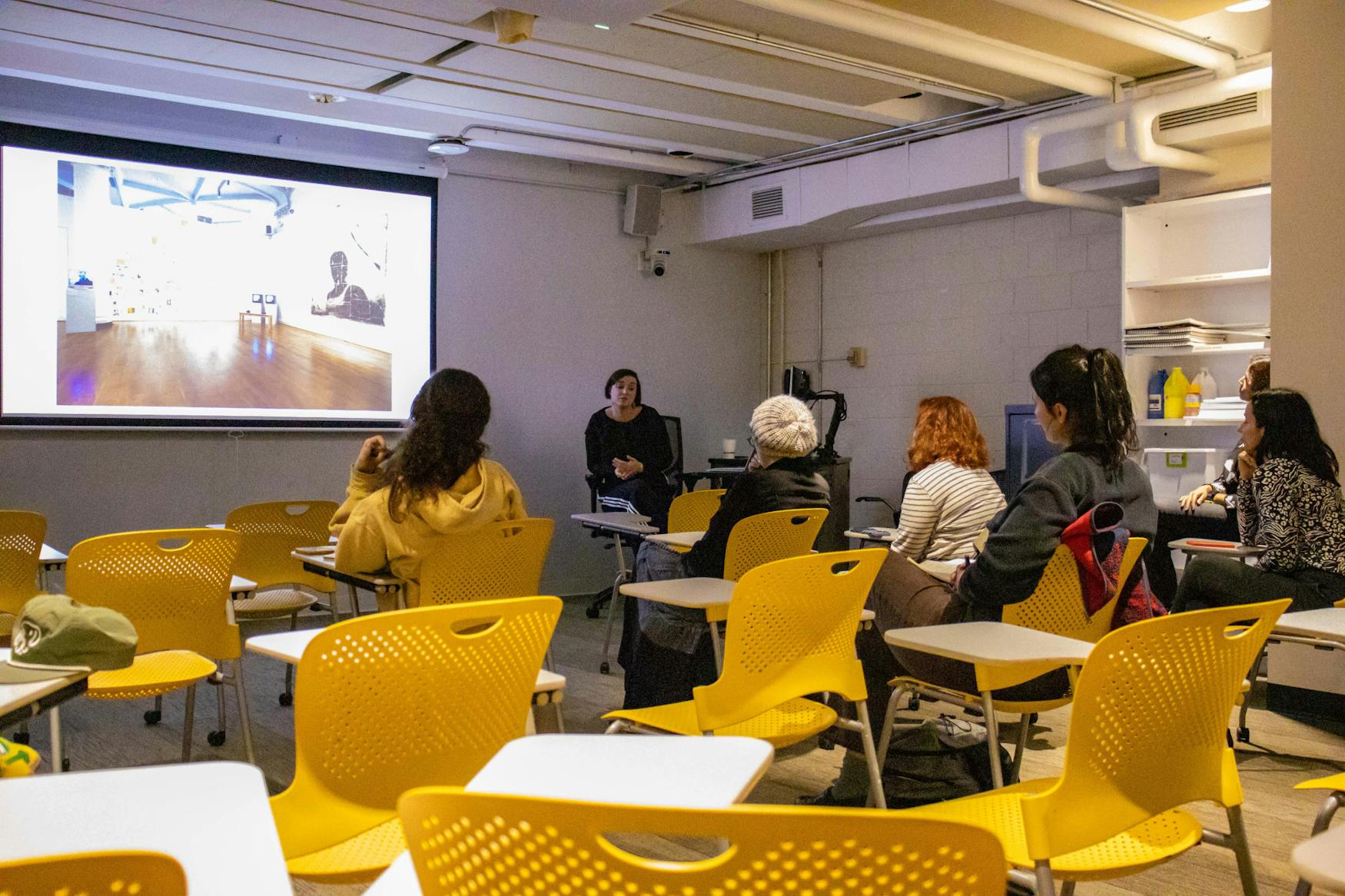Post Baccalaureate lecture series: Leah Triplett Harrington
On Friday, Oct. 25 at 2:30 p.m. in Goldman-Schwartz Art Studios, writer and curator Leah Triplett Harrington gave a presentation sponsored by the Department of Fine Arts Post-Baccalaureate Studio Art Program. The talk was inspired by her most recent co-curated exhibit “Artists as Cultivators.” The exhibit is currently hosted at Pennsylvania Academy of the Fine Arts and will be on display until July 7, 2024.
Harrington is currently working as PAFA’s Director of Exhibitions and Contemporary Curatorial Initiatives. PAFA was founded in 1805 and was the “first school and museum of fine arts” in the United States. Its mission is to tell the diverse story of America through art, “expanding who has been included in the canon of art history through its collection, exhibitions, and public program.” Harrington is vital in this mission as a curator of contemporary art whose focus is on rethinking who is included in American contemporary art.
In previous roles Harrington was the curator at Now + There, Boston’s “first and only public art organization dedicated to supporting artists and communities.” As creator of Now + There, Harrington “facilitated the Public Art Accelerator and organized large scale public art commissions in Boston” including Justin Favela’s “¡Provecho!” In addition to curating “¡Provecho!” Harrington wrote an article exploring the ideas that inspired the installation.
During her presentation, Harrington set out to explore the idea that artists also exist as curators. In the art world, art historians look to the past and artists toward the future, while curators “look forward and backward at the same time.” As a curator, her job is to metaphorically sit between the two in efforts to make meaningful and compelling exhibits. In a world that is highly digitized, she asks the questions: “How do you make a space memorable [that is otherwise unmemorable]? How do you make people stop or just look up from their phones?” She said that artists, and moreover curators, have the “hardest jobs of all,” creating new things from nothing, especially in a world that often does not support them.
Harrington also touched on how the art world is changing as museums and artists’ spaces are reconceptualized. Having a separate studio space has always been a challenge for artists according to Harrington. She said, “We keep trying to solve this same problem of being an artist.” There is no one right answer to this problem, but Harrington shared some of the current research she is doing on artists’ residencies. These residencies serve as a space to “provide artists, scholars, educators and other creative professionals the time, space and resources to work, individually or collectively, on the research and development of their practice.”
The presentation ended with a question and answer session with Harrington and those in attendance focused on providing advice to those looking to enter into the art world.



Please note All comments are eligible for publication in The Justice.